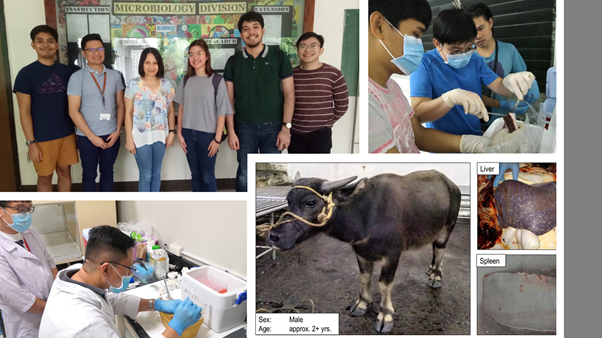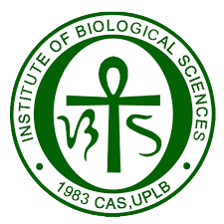Photo: Camar P. Ameril
Monoclonal antibodies (mAbs) are known to have applications in molecular biology, diagnostics and therapeutics. Traditionally, mAbs are produced through hybridoma technology which uses mammalian antibody-producing B cells from laboratory animals (e.g., mouse) fused with myeloma, an immortalized B (cancer) cell. Alternatively, there is a growing interest on phage display technology as it is considered a robust platform that offers high-throughput screening for the discovery of novel antibodies. New generation antibodies, also known as recombinant antibodies, are derived from combinatorial libraries. Using recombinant DNA technology, antigen-binding domains are inserted into phagemid vectors that are consequently displayed in bacteriophages. The combinatorial library currently being constructed was obtained from native Philippine water buffalo (Bubalus bubalis). Antibody producing cells from the largest secondary lymphoid tissue (i.e., spleen) were used to extract total RNA. From this, cDNA for the variable light and heavy chains of immunoglobulin µ (IgM) are synthesized through reverse-transcription. Using degenerate primers, different combinations will produce diverse sequences resulting to different binding affinities. Single-chain variable fragments (scFv) will be produced through splice-overlap extension polymerase chain reaction (SOE-PCR). This will be followed by ligation into pAK100 phagemid vector that will be inserted into Escherichia coli cells through transformation. About 107-109 transformants will be produced and transfected with M13 KO7 bacteriophages to pick up the scFv genes and display the antibody fragments in its surface as fusion proteins. Specific binders to different antigens and toxins will be fished-out through bio-panning and phage-ELISA. This library will serve as a resource for molecular biology reagents, that are useful in research and medical applications. Specific objectives include (i) construction of naïve phage display library from Philippine water buffalo; (ii) sequence diversity analysis of the constructed library; (iii) affinity selection (biopanning) against various antigens; and (iv) In-silico modelling of the scFv antibody-antigens interactions.
Key Words: Phage display library, recombinant antibody, ELISA, biopanning, diagnostics, therapeutics
Rina B. Opulencia (Project Leader)
–


